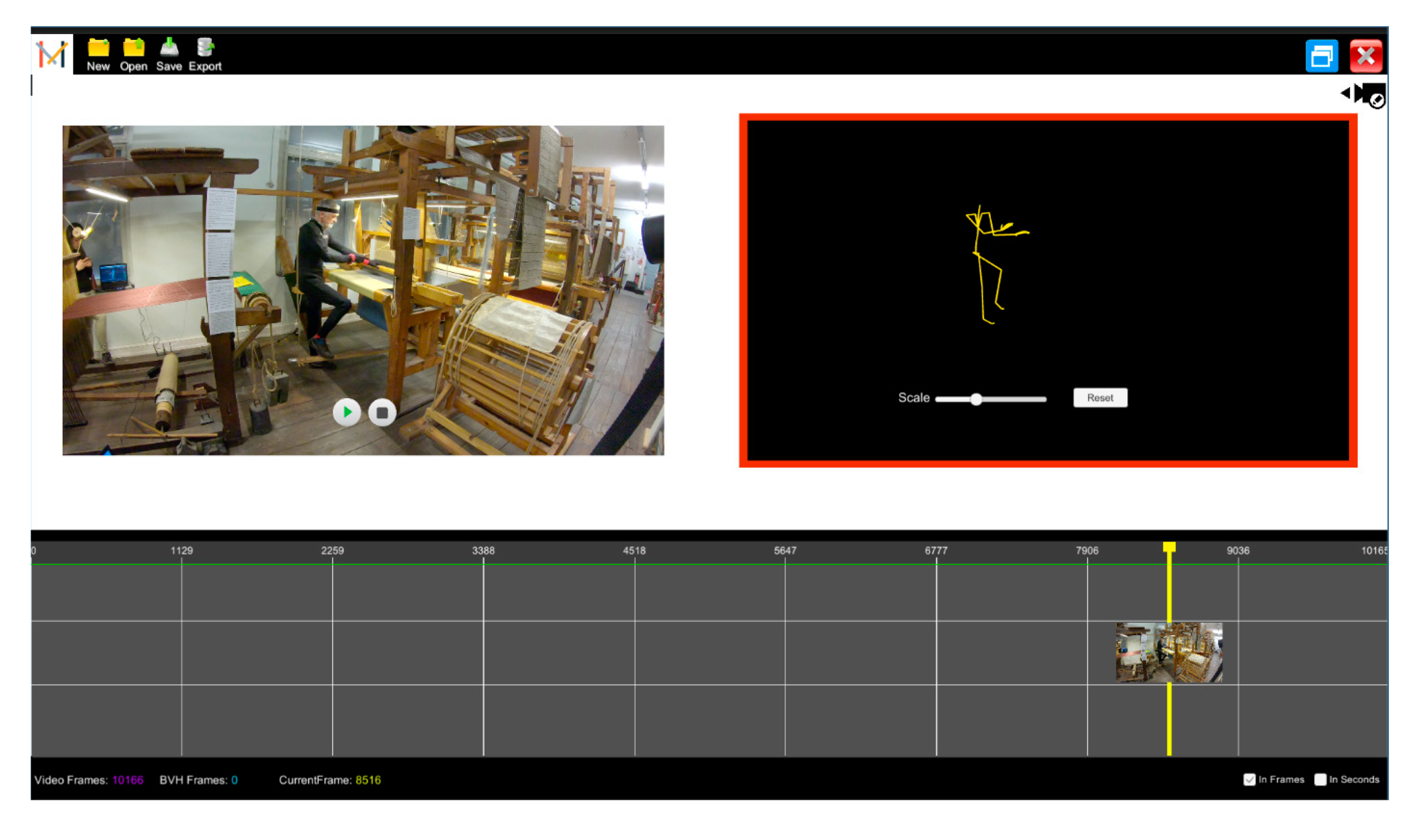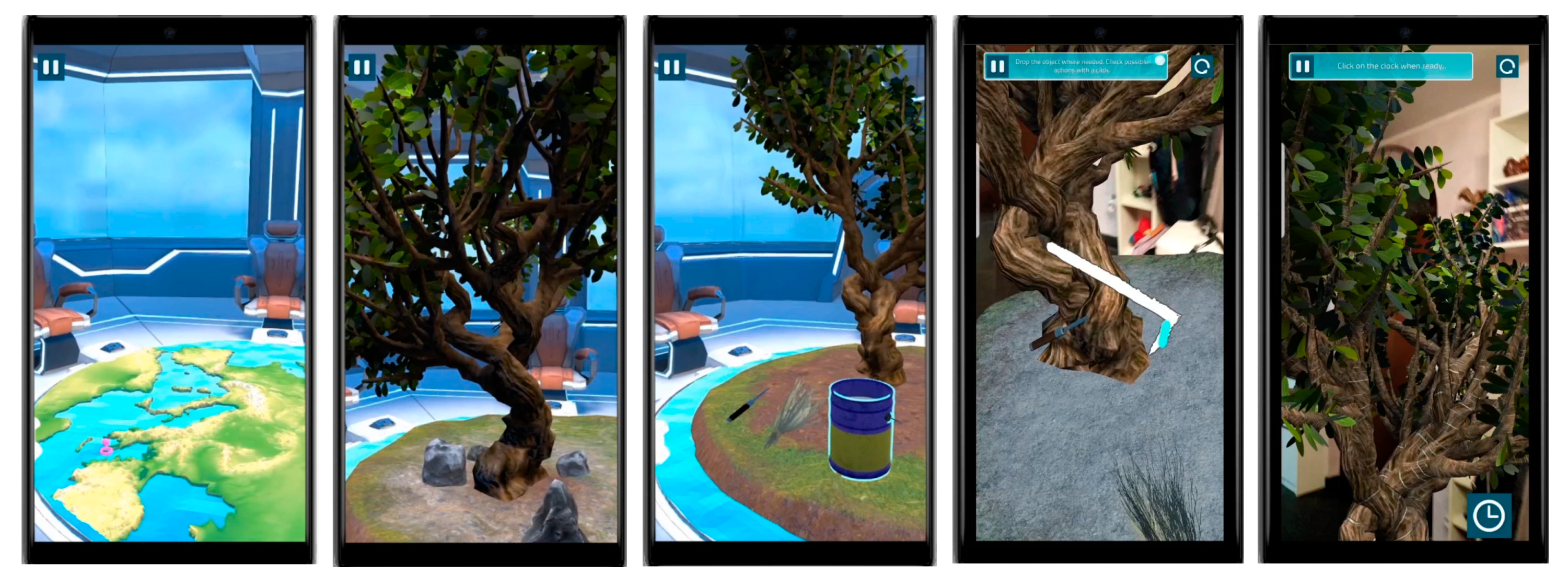Representation and Preservation of Heritage Crafts
Abstract
:1. Introduction
- Craft articles have multiple affordances as traded products. Typically, they are utilitarian objects. As heritage articles, they carry tradition and aesthetics. As souvenirs, we associate them with our own memories of presence at a place or event. Last, self-made craft articles in participatory engagement provide experiences and embodied knowledge.
- Craft workshops and pertinent thematic tourism activities exhibit the potential of participatory experiences and access to local culture. Thematic tourism and workshops can extend visitor stay on location or enhance the options of day-trips near central sites.
- Thematic tourism alleviates visitor load from mass tourism destinations. Crafts flourish in multiple, distributed, rural areas. Unlike monuments of material heritage, intangible forms of heritage, have a wider spatial distribution as to the locations that can be practiced.
2. Relevant Work
2.1. Creative and Cultural Industries and Their Contribution to the Economy
2.2. Heritage Digitisation
2.3. Craft Digitisation and Representation
3. Method
3.1. Craft Representation
3.2.1. Digitisation
3.2.2. Practice
3.2.3. Context
3.2. Craft Presentation
4. Use Cases
4.1. Margarites
4.2. Chios
4.3. Krefeld
5. Conclusions
Supplementary Materials
Author Contributions
Funding
Acknowledgments
Conflicts of Interest
References
- UNESCO. Traditional Craftsmanship. Available online: https://ich.unesco.org/en/traditional-craftsmanship-00057 (accessed on 16 January 2020).
- KEA European Affairs. The Economy of Culture in Europe: A Study Prepared for the European Commission (Directorate-General for Education and Culture). Available online: https://ec.europa.eu/assets/eac/culture/library/studies/cultural-economy_en.pdf (accessed on 12 February 2020).
- UNESCO. Creative Economy Report: Widening Local Development Pathways. Available online: https://unesdoc.unesco.org/ark:/48223/pf0000224698 (accessed on 12 February 2020).
- KEA European Affairs. The Impact of Culture on Creativity. Available online: https://europa.eu/capacity4dev/file/18617/download?token=Fzta9pMB (accessed on 12 February 2020).
- TERA Consultants. Building a Digital Economy: The Importance of Saving Jobs in the EU’s Creative Industries. Available online: https://euipo.europa.eu/ohimportal/documents/11370/71142/Building+a+Digital+Economy,+the+importance+of+saving+jobs+in+the+EUs+creative+industries (accessed on 12 February 2020).
- Kreidi, J. Crafts and Tourism: UNESCO Action. In Proceedings of the First International Congress on Tourism and Traditional Crafts, Riyadh, Saudi Arabia, 7–14 November 2006. [Google Scholar]
- OECD Annual Report 2009. Available online: https://www.oecd.org/newsroom/43125523.pdf (accessed on 16 January 2020).
- Du Cros, H. UNWTO Study on Tourism and Intangible Cultural Heritage: Examples of Best Practices from Australia, Indonesia, Thailand and Vanuatu. 2011. Available online: https://www.e-unwto.org (accessed on 12 February 2020).
- Rennick-Egglestone, S.; Brundell, P.; Koleva, B.; Benford, S.; Roussou, M.; Chaffardon, C. Families and mobile devices in museums: Designing for integrated experiences. J. Comput. Cult. Herit. (JOCCH) 2016, 9, 11. [Google Scholar] [CrossRef]
- ETH Library’s Best Practices in Digitization. Available online: https://www.library.ethz.ch/en/ms/DigiCenter/Best-Practices-in-Digitization (accessed on 16 January 2020).
- Brosseau, K.; Choquette, M.; Renaud, L. Digitization Standards for the Canadian Museum of Civilization Corporation. Available online: http://museumsassn.bc.ca/wp-content/uploads/2015/01/smcc_numerisation-cmcc_digitization-eng.pdf (accessed on 16 January 2020).
- CARLI Digital Collections Users’ Group; CARLI Created Content Committee. Guidelines for the creation of digital collections, Consortium of Academic and Research Libraries at the University of Illinois. Available online: https://www.carli.illinois.edu/sites/files/digital_collections/documentation/guidelines_for_video.pdf (accessed on 16 January 2020).
- 3D-ICONS Project. Guidelines & Case Studies. Available online: https://pro.europeana.eu/files/Europeana_Professional/Projects/Project_list/3D-ICONS/Deliverables/3D-ICONS%20Guidelines%20and%20Case%20Studies.pdf (accessed on 16 January 2020).
- MINERVA Project. Good Practices Handbook. Available online: https://www.minervaeurope.org/structure/workinggroups/goodpract/document/goodpractices1_3.pdf (accessed on 16 January 2020).
- Europeana Collections. Available online: https://www.europeana.eu/ (accessed on 16 January 2020).
- Doerr, M.; Ore, C.-E.; Stead, S. The CIDOC conceptual reference model: A new standard for knowledge sharing. In Proceedings of the Tutorials, Posters, Panels and Industrial Contributions at the 26th International Conference on Conceptual Modeling, Auckland, New Zealand, 5–9 November 2007; Volume 83, pp. 51–56. [Google Scholar]
- I-Treasures Project. Available online: https://ec.europa.eu/digital-single-market/en/blog/i-treasures-capturing-intangible-cultural-heritage-and-learning-rare-know-how-living-human (accessed on 17 January 2020).
- Modul-Dance Project. Available online: http://www.modul-dance.eu/ (accessed on 17 January 2020).
- Dance Project. Available online: http://dance.dibris.unige.it/ (accessed on 17 January 2020).
- European Theatre Lab. Available online: https://www.europeantheatrelab.eu/ (accessed on 17 January 2020).
- Terpsichore Project. Available online: http://terpsichore-project.eu/ (accessed on 17 January 2020).
- Geijer, A. A History of Textile Art; Pasold Research Fund: London, UK, 1979. [Google Scholar]
- Hecht, A. The Art of the Loom; British Museum Press: London, UK, 1989. [Google Scholar]
- Donkin, L. Crafts and Conservation: Synthesis Report for ICCROM. Available online: https://www.iccrom.org/publication/crafts-and-conservation-synthesis-report-iccrom (accessed on 17 January 2020).
- Costin, C.L. Introduction: Craft and social identity. Archeol. Pap. Am. Anthropol. Assoc. 1998, 8, 3–16. [Google Scholar] [CrossRef]
- UNESCO. Guidelines for the Preservation of Digital Heritage. Available online: https://unesdoc.unesco.org/ark:/48223/pf0000130071 (accessed on 17 January 2020).
- Fotopoulou, S.V.; Drinis, Y.N.; Bazini, E.; Fakiola, M. Rural Space as Cultural Heritage. Available online: http://ayla.culture.gr/wp-content/uploads/2018/10/1st_S_S_2018_Rural_Space_as_Cultural_Heritage_WebENG.pdf (accessed on 16 January 2020).
- Partarakis, N.; Zabulis, X.; Antona, M.; Stephanidis, C. Transforming Heritage Crafts to engaging digital experiences. In Visual Computing for Cultural Heritage; Liarokapis, F., Voulodimos, A., Doulamis, N., Doulamis, A., Eds.; Springer: Basel, Switzerland, 2019. [Google Scholar]
- Zabulis, X.; Meghini, C.; Partarakis, N.; Kaplanidi, D.; Doulgeraki, P.; Karuzaki, E.; Stefanidi, E.; Evdemon, T.; Metilli, D.; Bartalesi, V. What Is Needed to Digitise Knowledge on Heritage Crafts. Memoriamedia Review. 2019. Available online: https://review.memoriamedia.net/ (accessed on 12 February 2020).
- Stefanidi, E.; Partarakis, N.; Zabulis, X.; Zikas, P.; Papagiannakis, G.; Thalmann, N.M. TooltY: An approach for the combination of motion capture and 3D reconstruction to present tool usage in 3D environments. In Intelligent Scene Modelling and Human Computer Interaction; Thalmann, N.M., Zheng, J., Eds.; Springer: Basel, Switzerland, 2020. [Google Scholar]
- Zhang, J.; Wu, Q.; Zhang, J.; Shen, C.; Lu, J.; Wu, Q. Heritage image annotation via collective knowledge. Pattern Recognit. 2019, 93, 204–214. [Google Scholar] [CrossRef]
- Su, X.; Sperlì, G.; Moscato, V.; Picariello, A.; Esposito, C.; Choi, C. An edge intelligence empowered recommender system enabling cultural heritage applications. IEEE Trans. Ind. Inform. 2019, 15, 4266–4275. [Google Scholar] [CrossRef]
- UNESCO. Transhumance, the Seasonal Droving of Livestock Along Migratory Routes in the Mediterranean and the Alps. Available online: https://ich.unesco.org/doc/src/42975-EN.doc (accessed on 16 January 2020).
- UNESCO. Art of Dry Stone Walling, Knowledge and Techniques. Available online: https://ich.unesco.org/doc/src/39132-EN.doc (accessed on 17 January 2020).
- UNESCO. Tinian Marble Craftsmanship. Available online: https://ich.unesco.org/doc/src/30299-EN.doc (accessed on 16 January 2020).
- Nansense Website. Available online: https://www.nansense.com (accessed on 17 January 2020).
- Qammaz, A.; Argyros, A.A. MocapNET: Ensemble of SNN Encoders for 3D Human Pose Estimation in RGB Images; BMVA Press: Guildford, UK, 2019. [Google Scholar]
- Panteleris, P.; Oikonomidis, I.; Argyros, A. Using a single RGB frame for real time 3D hand pose estimation in the wild. In Proceedings of the 2018 IEEE Winter Conference on Applications of Computer Vision (WACV), Lake Tahoe, NV, USA, 12–15 March 2018; pp. 436–445. [Google Scholar]
- ELAN Annotation Tool. Available online: https://tla.mpi.nl/tools/tla-tools/elan (accessed on 17 January 2020).
- Zabulis, X.; Lourakis, M.I.; Stefanou, S.S. 3D Pose Refinement Using Rendering and Texture-Based Matching. In Proceedings of the International Conference on Computer Vision and Graphics, Warsaw, Poland, 5–17 September 2014; pp. 672–679. [Google Scholar]
- Stefanidi, E.; Partarakis, N.; Zabulis, X.; Papagiannakis, G. An Approach for the Visualization of Crafts and Machine Usage in Virtual Environments. In Proceedings of the ACHI 2020 (The 13th International Conference on Advances in Computer-Human Interactions), Valencia, Spain, 22–26 March 2020. [Google Scholar]
- Haklay, M.; Weber, P. Openstreetmap: User-generated street maps. IEEE Pervasive Comput. 2008, 7, 12–18. [Google Scholar] [CrossRef] [Green Version]
- Orama, V.R. Available online: http://oramavr.com/ (accessed on 17 January 2020).
- Rigaki, A.; Partarakis, N.; Zabulis, X.; Papagiannakis, G. An Approach Towards Artistic Visualizations of Human Motion in Static Media Inspired by the Visual Arts. In Proceedings of the ACHI 2020 (The 13th International Conference on Advances in Computer-Human Interactions), Valencia, Spain, 22–26 March 2020. [Google Scholar]
- Schmid, E.T. Beginning Glassblowing; Glass Mountain Press: Bellingham, WA, USA, 1998. [Google Scholar]
- Psiloritis UNESCO Global Geopark. Available online: http://www.unesco.org/new/en/natural-sciences/environment/earth-sciences/unesco-global-geoparks/list-of-unesco-global-geoparks/greece/psiloritis/ (accessed on 16 January 2020).
- Mingei Project. Keramion. Available online: http://www.mingei-project.eu/pottery-experience-keramion/ (accessed on 17 January 2020).
- UNESCO. Mediterranean Diet. Available online: https://ich.unesco.org/doc/download.php?versionID=20926 (accessed on 16 January 2020).
- UNESCO. Know-How of Cultivating Mastic on the Island of Chios. Available online: https://ich.unesco.org/doc/src/26651-EN.doc (accessed on 17 January 2020).
- UNESCO. UNESCO Moving forward the 2030 Agenda for Sustainable Development. United Nations Educational; Scientific and Cultural Organization Paris. Available online: https://en.unesco.org/creativity/sites/creativity/files/247785en.pdf (accessed on 12 February 2020).
- Watkins, H.M.; Goodwin, G.P. Reflecting on sacrifices made by past generations increases a sense of obligation towards future generations. Personal. Soc. Psychol. Bull. 2019. [Google Scholar] [CrossRef] [PubMed]

































| Order Option | Short Description | Parameters |
|---|---|---|
| Goes to step | Sequential ordering of steps |
|
| Goes to parallel steps | Connection of steps that run in parallel |
|
| Waits for | Connection of steps that run in parallel and definition of the next action once they are all completed |
|
| Condition checking | Denotes focal points in the process, where the craftsman will check if a condition is met before proceeding |
|
© 2020 by the authors. Licensee MDPI, Basel, Switzerland. This article is an open access article distributed under the terms and conditions of the Creative Commons Attribution (CC BY) license (http://creativecommons.org/licenses/by/4.0/).
Share and Cite
Zabulis, X.; Meghini, C.; Partarakis, N.; Beisswenger, C.; Dubois, A.; Fasoula, M.; Nitti, V.; Ntoa, S.; Adami, I.; Chatziantoniou, A.; et al. Representation and Preservation of Heritage Crafts. Sustainability 2020, 12, 1461. https://doi.org/10.3390/su12041461
Zabulis X, Meghini C, Partarakis N, Beisswenger C, Dubois A, Fasoula M, Nitti V, Ntoa S, Adami I, Chatziantoniou A, et al. Representation and Preservation of Heritage Crafts. Sustainability. 2020; 12(4):1461. https://doi.org/10.3390/su12041461
Chicago/Turabian StyleZabulis, Xenophon, Carlo Meghini, Nikolaos Partarakis, Cynthia Beisswenger, Arnaud Dubois, Maria Fasoula, Vito Nitti, Stavroula Ntoa, Ilia Adami, Antonios Chatziantoniou, and et al. 2020. "Representation and Preservation of Heritage Crafts" Sustainability 12, no. 4: 1461. https://doi.org/10.3390/su12041461
APA StyleZabulis, X., Meghini, C., Partarakis, N., Beisswenger, C., Dubois, A., Fasoula, M., Nitti, V., Ntoa, S., Adami, I., Chatziantoniou, A., Bartalesi, V., Metilli, D., Stivaktakis, N., Patsiouras, N., Doulgeraki, P., Karuzaki, E., Stefanidi, E., Qammaz, A., Kaplanidi, D., ... Galanakis, G. (2020). Representation and Preservation of Heritage Crafts. Sustainability, 12(4), 1461. https://doi.org/10.3390/su12041461








